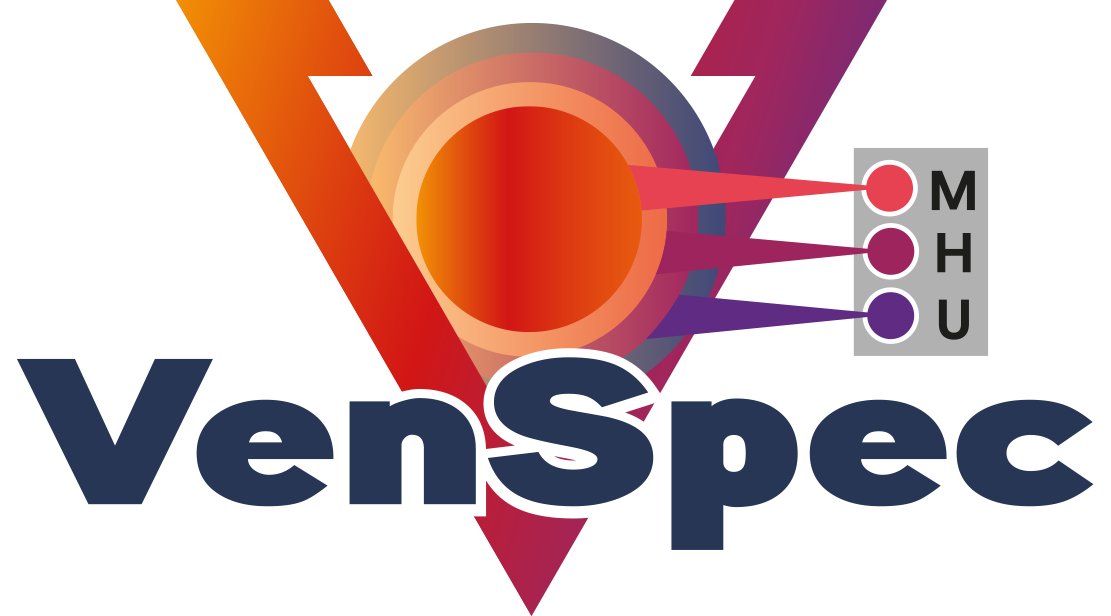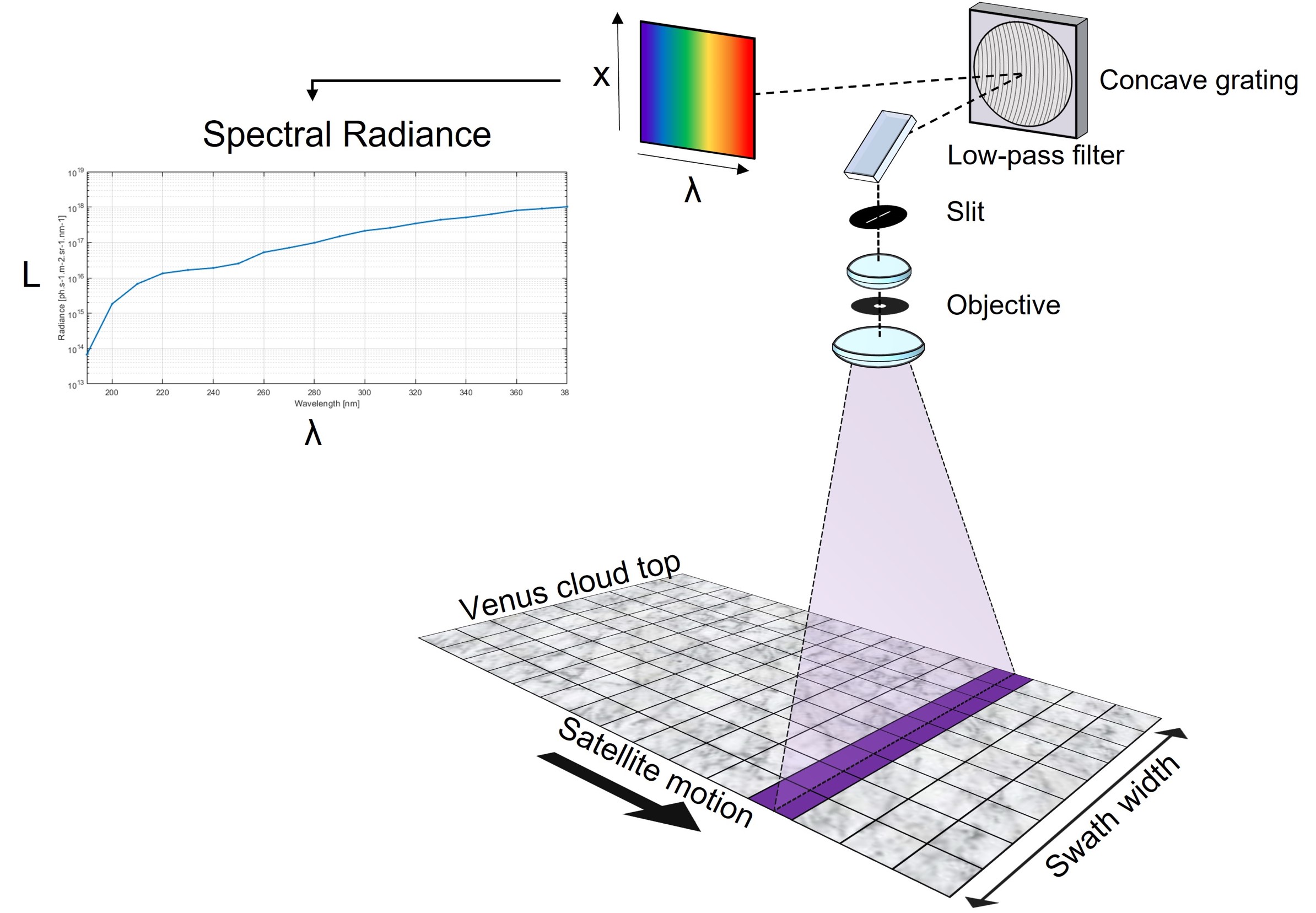Operation modes
There are four distinct operation modes.
Venus observation
Solar calibration
VenSpec-U will have some opportunities during the mission to perform radiometric calibration on the Sun. This will be achieved by off-pointing the spacecraft every 112 days such that the Sun crosses the instrument FoV. The radiometric calibration will rely on the combination of two Sun scans. The first scan will use a set of pinholes providing the radiometric calibration for a small portion of the FoV. The pinholes are not affected by molecular contamination so the quality of this calibration method is expected to be very stable during the mission. The second scan will use a set of diffusers; these ones may be affected by molecular contamination, but will enable calibration of the full FoV.
Occasionally, a third scan will be requested to perform a calibration with another set of diffusers ("reference diffusers"). These diffusers are expected to contaminate much slowly than the nominal ones, thus enabling a relative tracking of the contamination.
Dark & internal calibration
The calibration plan also foresees dedicated sessions to characterize and track any evolution of the dark current of the CMOS sensor. This will be done periodically for different sets of parameters such that the collected data will feed a dark current model used to support the inversion pipeline.
The internal calibration, using the UV sources, will be used to perform in-flight PTC (Photon Transfer Curve), PRNU (Pixel Response Non Uniformity) characterization and diagnosis of the CMOS sensor. sensor.

